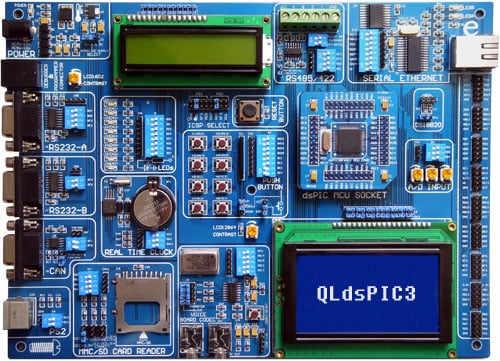Embedded Systems Development Board: FPGA vs Micro controllers
What you need to know
Have you ever been in the situation where you don't know which dev board you need to buy? As an engineer I find it quite difficult to choose which board is right form my needs. Some FPGA boards have way too much addons for my liking, some having GPU's (Graphics Processing Unit) and I would never even go near those kinda stuff. Some smaller Atmel and Microchip boards offer either too little processing power, causing the manufacture to over compensate with a bunch of different external controllers to drive the price up. Whether you are a professional or a hobby engineer, I'll give you best tips and what to look for when purchasing a development kit.

What is microelectronics?
As the name suggests, this is electronics on a real small scale. All of the principles are more or less the same as traditional electronics, only scaled down by several thousands. Most devices that are traditional have a microelectronic equialent. The technology began when scientists started scaling down transistors to make ic's (integrated circuits) and ended up needing to scale down other components. The most common are resistors, capacitors and circuits (which also led to the design of the pcb or printed circuit board). If you want to know more about microprocessors, you can read about them here.
Microprocessor Development Boards
FPGA and CLPD boards
Xilinx is a good reputable company, known for high quality, fast FPGA and CLPD solutions. They have a range of Spartan chips which are known for their reliability and diverse uses. These chips can power USB, have upgradable flash memory, built in rs232, SPI and embedded ethernet. The best and most versatile microprocessor so start thinking about verilog training! You can get development kits straight from the manufacturer but they are really expensive. I recommend getting a Xilinx breakout board, they only have the bare essentials to power the chip and breakout all the pins on a quality pcb board. This provides a very cheap solution, allowing you to interface the chip with all your existing components. Another great thing is their University program, it well worth a look.
Altera also is a market leader in FPGA design, boasting their Stratix, Arria, Cyclone and Max series. They are recognised in the market as the top producers of video processing technology and simple embedded processing. If you have no idea what verilog or VHDL is, then no worries. Their Quartus 2 design software allows you to program their chips using embedded C and C++. The software is absolutely packed with easy to use libraries, making it an easy out of the box solution. You can get the fancy embedded and DSP boards but I recommend getting a basic board with basic features sush as an LCD display, keypad, a few LED's and general inputs/outputs.
AVR and PIC development boards
Not everyone needs a powerful DSP or FPGA to complete simple tasks (although they both make them). Some applications just require simple sensors, switches, indicators, relays or analog to digital converters. Atmel and Microchip are well renouned for producing low cost versatile chips creating high competition, the Intel and AMD of the embedded systems world I call them. They both design chip with onboard serial rs232, embedded ethernet, a/d converters, interupt routines and internal timers. Some of their chips don't even require external oscillators to function providing a cheap and easy solution for mass production of finished prototypes. I personally use Microchip devices more than Atmel but that is only due to local availability. I have a simple way to create a traffic light using an 18f84a pic chip here, the code is very simple and requires little effort. AVR development boards usually go cheaper than the PIC equivalent but its up to your to shop for a bargain.








